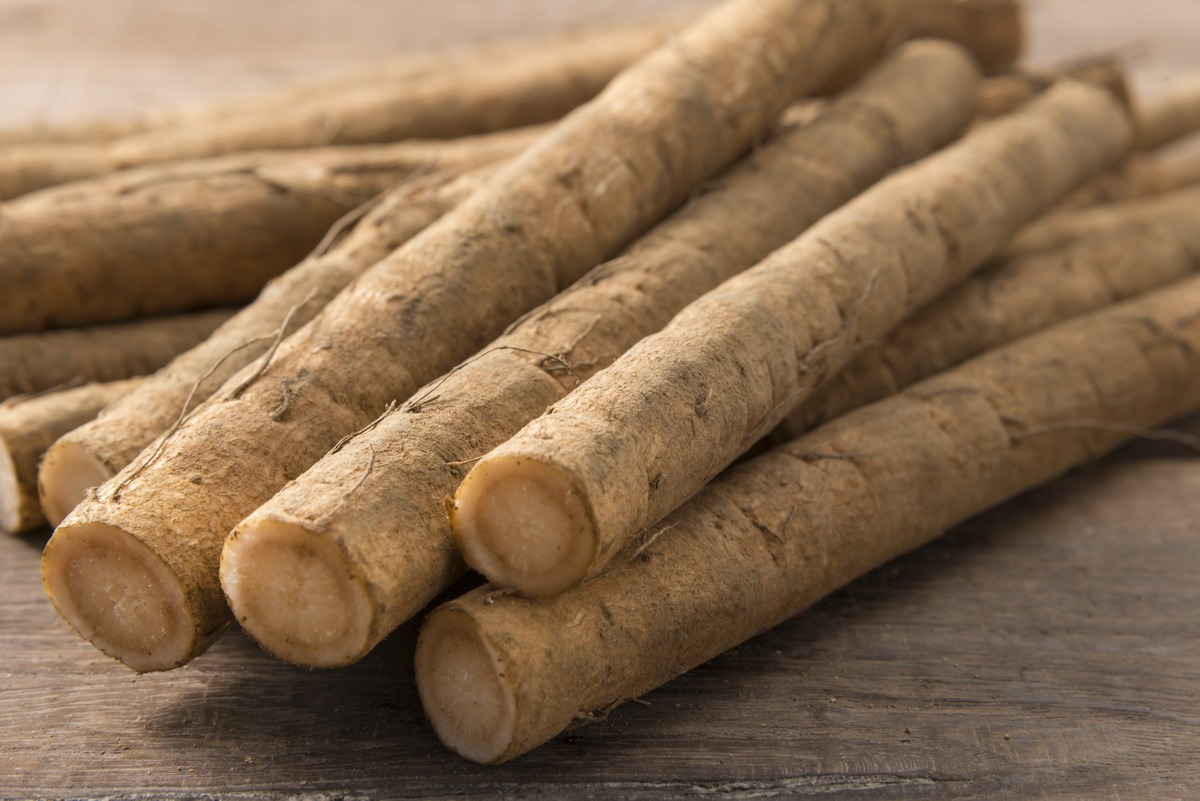Arctium, commonly known as burdock, is one of the oldest and most widespread plants in official and folk medicine. Preparations based on infusions and extracts of burdock root are recommended by the State Pharmacopoeia of the Russian Federation and foreign pharmacopoeias for the treatment of a wide variety of diseases. Infusions are recommended for diseases of the stomach, kidneys and gallbladder, as well as for joint pain. As an antipyretic, for rheumatism, mastopathy, for wound healing. Externally – for eczema, furunculosis, for the treatment of skin diseases and hair strengthening. Burdock root oil extracts have antitumor activity.
In the kitchen, burdock root, dug up before flowering begins, is used as a substitute for artichoke. In some countries, burdock is considered a vegetable.
Biozevtika’s burdock root CO2 extract is a brownish-yellow viscous mass that liquefies at 300°C – 350°C. The extract has a characteristic “woody” aroma. More than 80 biologically active components have been identified in chromatomas spectrometric studies.

Chart 1. Main components of burdock root CO2 extract
| NAME | CONTENT IN% OF THE AMOUNT OF VOLATILE COMPONENTS | EFFECT |
|---|---|---|
| Palmitic acid | 53 | Unsaturated fatty acid for hydrophobing in cosmetics. |
| α-pinene | 5,5 | Easily penetrates the epidermis and irritates the nerve endings, causing intense blood flow. Has an expectorant effect. |
| Sitosterol | 4,8 | Antisclerotic effect, lowers blood cholesterol levels. |
| Sabinen | 3,9 | Stimulates the respiratory center, stimulates heart activity, has a warming effect, accelerates metabolic processes. Soothes, has an antipruritic effect on irritated skin. |
| Linoleic Acid | 1,7 | An essential omega-6 unsaturated fatty acid. It has anti-inflammatory, vasoconstrictive and aggregating effects. If there is no balance between omega-3 and omega-6 fatty acids, competing processes can occur that affect metabolism. |
| Limonene | 1,6 | Effective against fungus, mold and bacteria. perfume fragrance. Effective repellent. Undesirable in cosmetic preparations for sensitive and allergic skin. |
| Linolenic acid | 1,5 | An unsaturated, essential fatty acid from the class of omega-3 fatty acids. It has a membrane-protecting, angioprotective effect. Immunomodulatory, improves brain metabolism. |
| α-Thujone | 1,3 | Antibacterial, fungistatic, virusostatic effect. Helps reduce foot sweating. Prohibited for use in food. |
| Stearic acid | 1,2 | Widely used in cosmetic preparations as a humectant and thickening agent. |
| Stigmasterol | 1,1 | Used as a raw material for the production of steroid hormones. |
CO2 extract from burdock can be recommended for use in cosmetic and pharmaceutical products with the following range of effects:
- anti-inflammatory, healing and analgesic agents
- Increase in elasticity (turgor) of the skin
- Anti-aging (helps remove wrinkles)
- Contribution to strengthening and growth of hair
- Repellents
It should also be noted that the CO2 extract is significantly more effective than the oil infusion made from burdock roots, better known as “burdock oil”, which is traditionally used both in folk medicine and in the official pharmacopoeia. For this reason, either the CO2 extract itself or its less concentrated oil solution can safely be recommended as a replacement.
Chart 2. Application rates, recommendations for use and storage of CO2 extracts
| Food usage rates | The recommended range of use for the most popular 10% oil solutions of CO2 extracts among technologists in the cosmetic industry (item A10 according to our internal classification) is 0.05-0.5% of the mass of the finished product (0.5-5 g / kg or 0.5-5 kg/ton). For extracts from solutions of other concentrations (A1-A100), the application rates must be recalculated proportionately. |
| Recommendations for use | It is recommended to add CO2 extracts in the final stages of preparation, in the cooling phase of the end product. |
| Storage Instructions | It is recommended to store CO2 extracts in a closed container in a cool room and avoid direct sunlight. |
Historical reference

Due to its distribution in our country, burdock has found very wide application in domestic folk medicine. The root of this plant is used, for example, in nephrolithiasis, diabetes, gout and rheumatism, dropsy, hemorrhoids, rickets and scrofula, furunculosis, chronic eczema, constipation. In addition, burdock is successfully used in cases of poisoning with mercury preparations and bites of poisonous animals. A decoction of burdock root is also used for sexually transmitted diseases and aching joints.